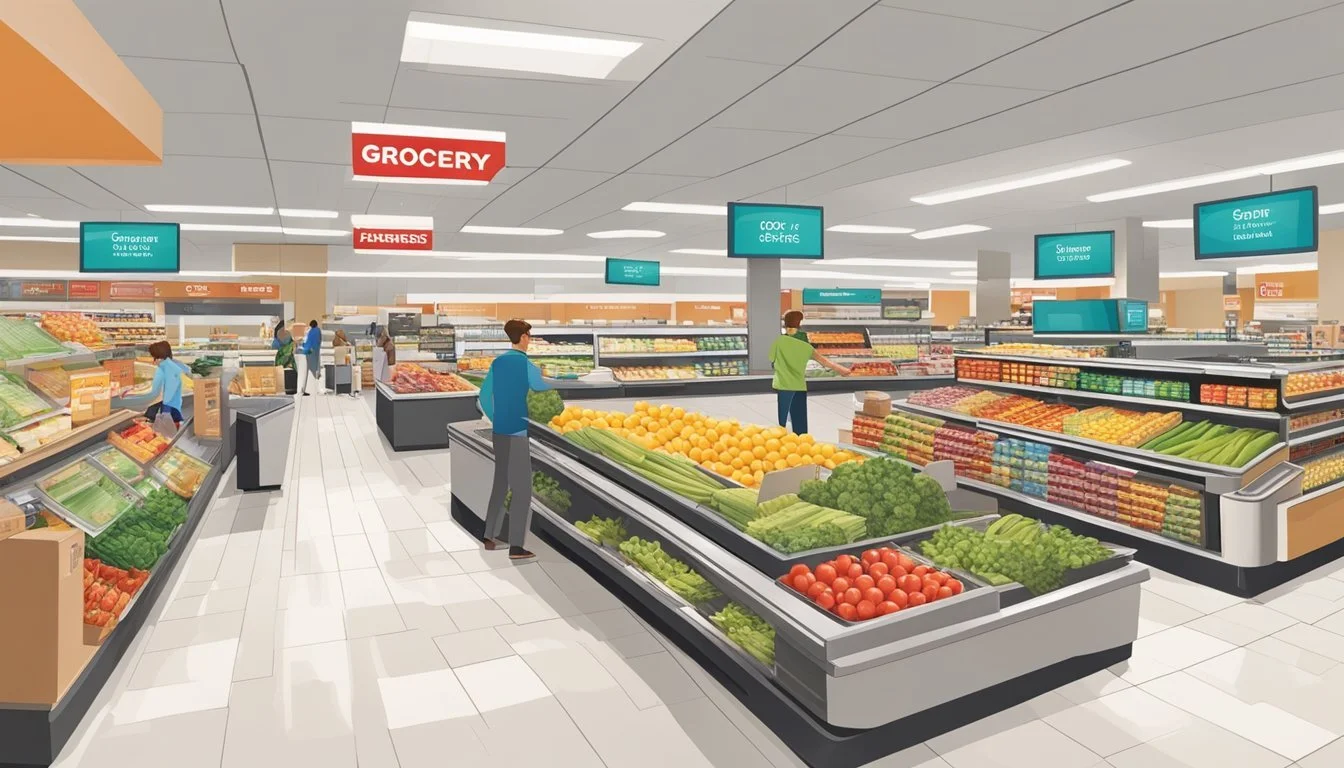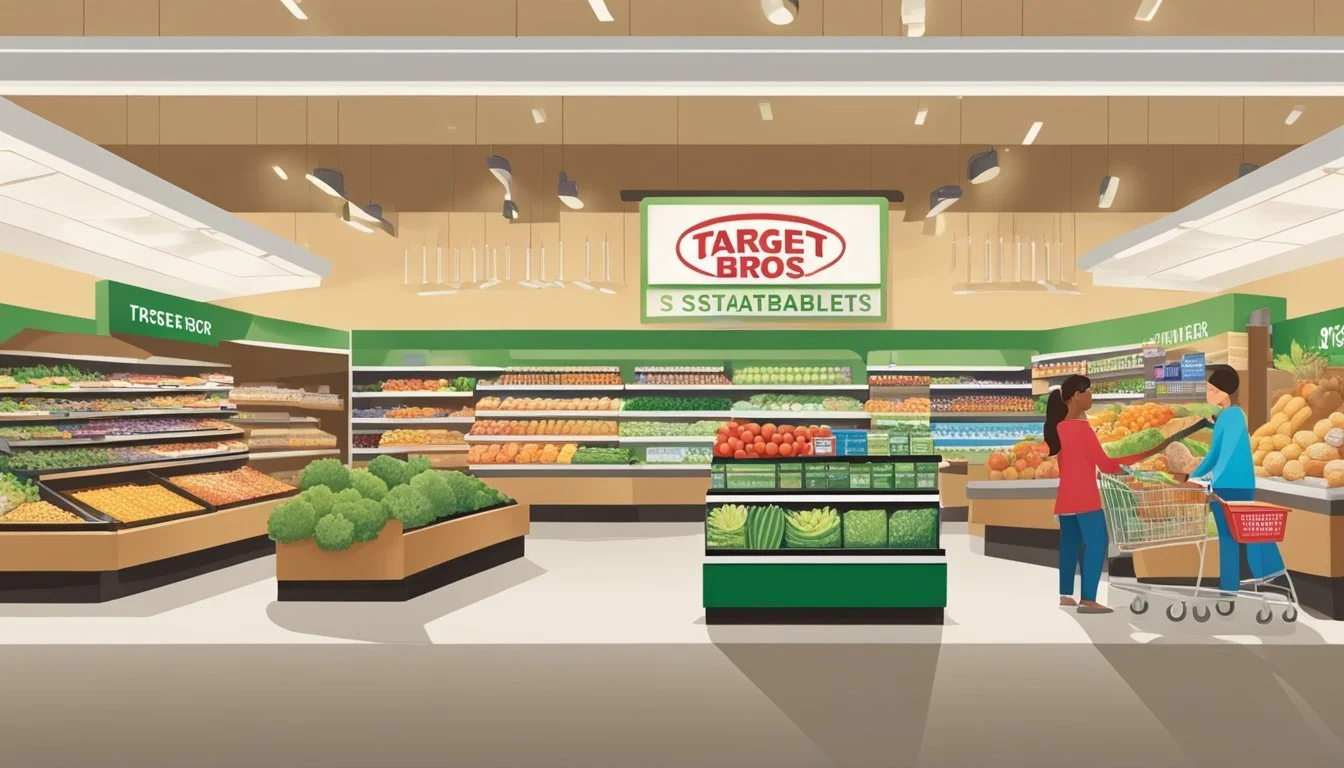Target vs Stater Bros. Markets
A Comprehensive Comparison of Price, Quality, and Selection
Target and Stater Bros. Markets are two popular grocery store chains that many shoppers compare when looking for the best deals and quality products. Both offer a wide range of groceries, household items, and everyday essentials, but they have distinct differences in pricing, selection, and overall shopping experience.
When it comes to pricing, Stater Bros. Markets often edges out Target by a slim margin. In a direct comparison, Stater Bros. was found to be about 2% cheaper than Target for a typical grocery haul, with a total bill of $115.15 compared to Target's $117.49. While this difference may seem small, it can add up over time for frequent shoppers.
Beyond price, each store has its own strengths. Target is known for its trendy home goods and clothing sections alongside groceries, making it a one-stop shop for many consumers. Stater Bros., on the other hand, focuses primarily on groceries and is particularly praised for its high-quality meat department and competitive prices on fresh produce.
Company Overview
Target and Stater Bros. Markets are two distinct retail chains with different origins, scopes, and business models. Target began as a department store and evolved into a major discount retailer, while Stater Bros. Markets has remained focused on grocery operations in Southern California since its inception.
History of Target
Target's story began in 1902 when George Dayton founded Goodfellow Dry Goods in Minneapolis, Minnesota. The company rebranded as Dayton's Dry Goods Company in 1903 and later became Dayton Corporation. In 1956, Dayton Corporation opened its first Target store in Roseville, Minnesota.
Target quickly gained popularity for offering quality merchandise at competitive prices. The company expanded rapidly throughout the 1960s and 1970s. In 2000, Dayton Hudson Corporation changed its name to Target Corporation, reflecting the growing importance of the Target brand.
Today, Target operates over 1,800 stores across the United States. The retailer is known for its "Expect More. Pay Less." slogan and its emphasis on design partnerships and exclusive product lines.
History of Stater Bros. Markets
Stater Bros. Markets traces its roots to a single grocery store opened in 1936 by twins Cleo and Leo Stater in Yucaipa, California. The brothers started with a $600 down payment on their first store, which quickly became successful.
Throughout the 1940s and 1950s, Stater Bros. expanded its presence in Southern California. The company remained family-owned until 1968 when it was sold to Petrolane, Inc. In 1986, Executive Chairman Jack H. Brown led a management buyout to return Stater Bros. to local ownership.
Stater Bros. Markets has maintained its focus on Southern California, operating over 170 supermarkets in the region. The company is known for its commitment to customer service and community involvement. Unlike Target's nationwide presence, Stater Bros. has chosen to concentrate on serving its local market effectively.
Store Locations and Accessibility
Target and Stater Bros. Markets differ significantly in their geographic reach and store locations. Target boasts a nationwide presence, while Stater Bros. focuses on serving Southern California communities.
Target's National Presence
Target operates over 1,800 stores across all 50 U.S. states and the District of Columbia. The retailer's extensive network makes it accessible to a wide range of consumers. Target stores are commonly found in suburban areas, shopping centers, and urban locations.
Many Target locations are larger format stores, averaging 130,000 square feet. These spacious layouts allow for a diverse product selection beyond groceries. The company also operates smaller-format stores in densely populated urban areas and near college campuses.
Target's widespread presence enables convenient online ordering with in-store pickup options for many customers. The retailer's distribution centers support efficient restocking and delivery services.
Stater Bros. Markets in the Community
Stater Bros. Markets maintains a focused presence in Southern California with 171 stores. This regional concentration allows the company to tailor its offerings to local preferences and build strong community ties.
The grocery chain's stores are typically found in neighborhood shopping centers and standalone locations. Stater Bros. emphasizes convenience for local shoppers, often situating stores in residential areas.
Stater Bros. cultivates relationships with local farms, supporting the region's agriculture. This connection enables the stores to offer fresh, locally sourced produce to customers.
The company's smaller store network compared to national chains allows for more personalized customer service. Store managers often have deep roots in their communities, fostering a local, family-owned atmosphere despite the chain's size.
Products and Selection
Target and Stater Bros. Markets offer distinct product ranges and quality levels. Their selections cater to different customer needs, from everyday essentials to specialty items.
Product Variety and Quality
Target provides a wide array of products beyond groceries, including clothing, electronics, and home goods. Their grocery section features both name-brand and private-label items. Target's Good & Gather line offers quality food products at competitive prices.
Stater Bros. Markets focuses primarily on groceries, with a reputation for high-quality fresh foods. Their meat department is particularly noteworthy, staffed by certified butchers who offer custom cuts and services at no extra charge.
Both stores stock fresh produce, though Stater Bros. typically offers a broader variety of fruits and vegetables. Stater Bros. also carries USDA Choice beef, ensuring consistent quality in their meat selection.
Organic and Health Options
Target has expanded its organic and health-focused offerings in recent years. The store's Good & Gather Organic line provides affordable organic options across various product categories.
Stater Bros. Markets also stocks organic produce and natural foods, though their selection may be more limited compared to Target. They offer organic dairy products and a range of gluten-free items to cater to diverse dietary needs.
Target tends to have a larger selection of trendy health foods and plant-based alternatives. In contrast, Stater Bros. focuses on traditional grocery staples with some organic options integrated throughout their departments.
Pricing and Value for Money
Comparing prices between Target and Stater Bros. Markets reveals key differences in pricing strategies and overall value for shoppers. Both stores offer competitive pricing, but each has its own strengths in certain product categories.
Everyday Prices and Discounts
Target focuses on competitive pricing for national brands and its own store brands like Good & Gather and Up & Up. The retailer often runs sales and promotions, especially through its Target Circle loyalty program. Shoppers can find significant discounts on home goods, apparel, and electronics.
Stater Bros. Markets, on the other hand, emphasizes everyday low prices on groceries. The chain is known for its competitive pricing on fresh produce, meat, and dairy products. Stater Bros. also offers weekly specials and digital coupons to help customers save.
Comparing Cost Across Chains
A price comparison between Target and Stater Bros. showed Stater Bros. to be slightly cheaper overall. In one comparison, Stater Bros. total came to $115.15, while Target's total was $117.49 - a difference of about 2%.
Target tends to have better prices on:
Home goods
Personal care items
Packaged snacks
Stater Bros. typically offers lower prices on:
Fresh produce
Meat and seafood
Dairy products
For budget-conscious shoppers, both stores use loss leaders to attract customers. Target often discounts popular items like eggs or milk, while Stater Bros. may offer deals on seasonal produce or holiday meats.
Consumer Experience
Target and Stater Bros. Markets offer distinct shopping experiences. Their approaches to convenience and customer service shape how consumers interact with each store.
Shopping Convenience
Target provides a one-stop shopping experience with groceries, household items, and clothing under one roof. Many locations offer curbside pickup and same-day delivery options. The store layout is typically spacious, with wide aisles and clear signage.
Stater Bros. Markets focuses primarily on groceries. Its smaller store footprint can make navigation quicker for shoppers seeking only food items. Some locations offer online ordering and curbside pickup services, though availability may vary by store.
Both chains prioritize store cleanliness. Target's larger stores can feel less crowded, while Stater Bros.' compact layout may appeal to those preferring a more traditional grocery experience.
Customer Service Reviews
Consumer Reports ranked Stater Bros. Markets 9th among grocery stores nationwide in their 2017 survey. The chain received high marks for staff courtesy and overall customer service.
Target's customer service ratings vary by location. Some shoppers appreciate the self-checkout options and tech-savvy approach. Others report inconsistent experiences with staff helpfulness.
Both stores generally maintain positive reputations for cleanliness. Stater Bros. often receives praise for its personalized service and knowledgeable staff, particularly in departments like meat and produce.
Target's broader product range can lead to longer checkout lines during peak hours. Stater Bros.' focus on groceries may result in quicker transactions for food-only purchases.
Special Features and Services
Target and Stater Bros. Markets offer distinct services that cater to different shopper needs. Each store provides unique features that set them apart in the competitive grocery market.
Unique Offerings by Target
Target's grocery section blends seamlessly with its broader retail offerings. The store carries a wide array of national brands alongside its private label products, including the popular Market Pantry and Good & Gather lines. Target's prepared foods section features grab-and-go meals and snacks for busy shoppers.
The retailer emphasizes convenience with its Drive Up service, allowing customers to place orders online and have them brought to their cars. Target's Shipt same-day delivery service provides an additional layer of convenience for those who prefer home delivery.
Target's packaging and labeling are designed for clarity and ease of use. The store also offers a selection of organic and natural products to cater to health-conscious consumers.
Stater Bros. Markets' Community Services
Stater Bros. Markets prides itself on strong community ties and personalized service. The store's butcher department is a standout feature, offering custom cuts and expert advice. Stater Bros. also boasts a full-service deli with made-to-order sandwiches and hot prepared foods.
The grocer emphasizes its commitment to local sourcing and supporting regional producers. Stater Bros. Markets' loyalty program rewards frequent shoppers with personalized discounts and special offers.
Stater Bros. has implemented clear labeling practices, including detailed information on product origins and nutritional content. The store has also made efforts to improve animal welfare standards in its meat and dairy sourcing, responding to growing consumer concerns in this area.
Sustainability and Local Partnerships
Target and Stater Bros. Markets both emphasize sustainability and local partnerships in their operations. They focus on supporting nearby farms and implementing eco-friendly initiatives to reduce their environmental impact.
Efforts in Supporting Local Farms
Target partners with local farms to source fresh produce for its grocery sections. The company prioritizes regional suppliers to reduce transportation distances and support community agriculture. Target's CEO has highlighted the importance of these partnerships in providing customers with high-quality, locally-grown options.
Stater Bros. Markets takes pride in its connections with California farmers. The company sources a significant portion of its produce from in-state growers. This approach supports local economies and ensures fresher products for customers. Stater Bros. also features special sections in stores to showcase locally-sourced items.
Both retailers offer organic produce options from regional farms. This commitment caters to customers seeking pesticide-free fruits and vegetables while supporting sustainable farming practices.
Environmental Initiatives
Target has set ambitious sustainability goals. The company aims to reduce its carbon footprint by:
Installing solar panels on store rooftops
Implementing energy-efficient lighting systems
Using eco-friendly refrigeration units
Stater Bros. Markets focuses on waste reduction and recycling. The company has:
Implemented a comprehensive recycling program
Reduced plastic bag usage
Invested in energy-efficient equipment
Both retailers have made strides in animal welfare. They work with suppliers who adhere to humane treatment standards for livestock. This approach aligns with growing consumer concerns about ethical sourcing practices.
Target and Stater Bros. continue to expand their sustainability efforts. They recognize the importance of environmental stewardship in meeting customer expectations and reducing operational costs.
Comparative Studies and Surveys
Consumer studies and market research provide valuable insights into how Target and Stater Bros. Markets stack up against each other and other grocery competitors. These comparisons offer shoppers useful data on pricing, quality, and overall customer satisfaction.
Consumer Feedback and Ratings
Consumer Reports ranked Stater Bros. Markets 9th among grocery stores nationwide in their annual survey. This placed Stater Bros. ahead of many larger chains, including Target. Shoppers praised Stater Bros. for competitive prices and high-quality meat and poultry. Target received positive feedback for its clean stores and organized layouts.
A 154-item grocery list comparison conducted by researchers found significant price differences between stores. While Target wasn't specifically mentioned, discount chains like Grocery Outlet and Foods Co offered prices 20-22% below average. This suggests Target may face challenges competing on price alone.
Market Research Insights
Market analysts have noted Target's efforts to expand its grocery offerings in recent years. The company has invested in fresh produce sections and private label brands to attract more frequent shoppers. However, Stater Bros. maintains an edge in the traditional grocery market.
Sales data indicates Stater Bros. performs well in its core California markets. The chain's focus on customer service and community involvement has fostered strong customer loyalty. Target's grocery sales, while growing, still make up a smaller portion of its overall revenue compared to dedicated supermarkets like Stater Bros.
Final Thoughts
Target and Stater Bros. Markets each offer distinct advantages for grocery shoppers. Price, selection, and shopping experience are key factors to consider when choosing between these two retailers.
Summary of Findings
Stater Bros. Markets typically provides lower everyday prices compared to Target. A recent comparison found Stater Bros. to be about 2% cheaper overall for a typical grocery trip. This small difference can add up to meaningful savings for regular shoppers.
Target excels in offering a wider variety of non-grocery items alongside food products. This makes it a convenient one-stop shop for households needing to purchase both groceries and other household goods.
Stater Bros. Markets focuses primarily on groceries, often providing a more extensive selection of fresh produce and local brands. This specialization can be beneficial for shoppers seeking specific food items or regional favorites.
Store atmosphere differs between the two. Target typically offers a more modern, stylized shopping experience. Stater Bros. Markets tend to have a more traditional grocery store feel, which some shoppers may prefer.
Loyalty programs and sales promotions vary between the two retailers. Shoppers should compare these offerings to maximize their savings potential at each store.









